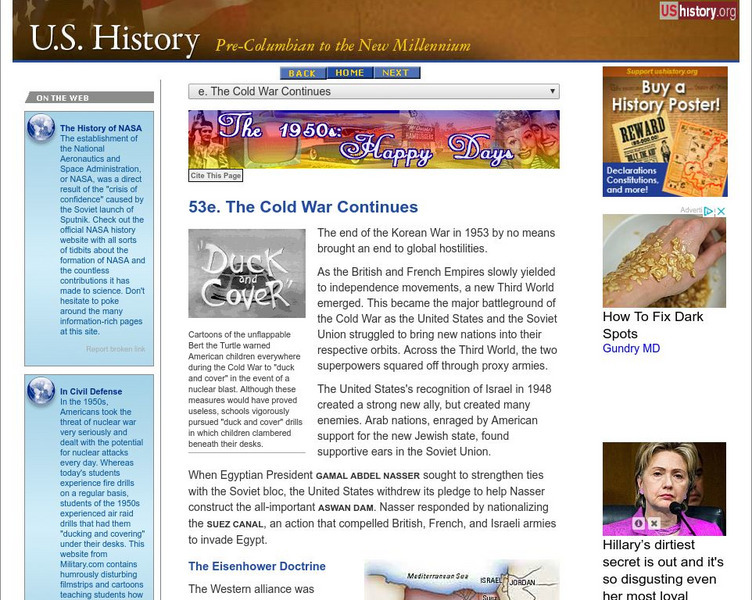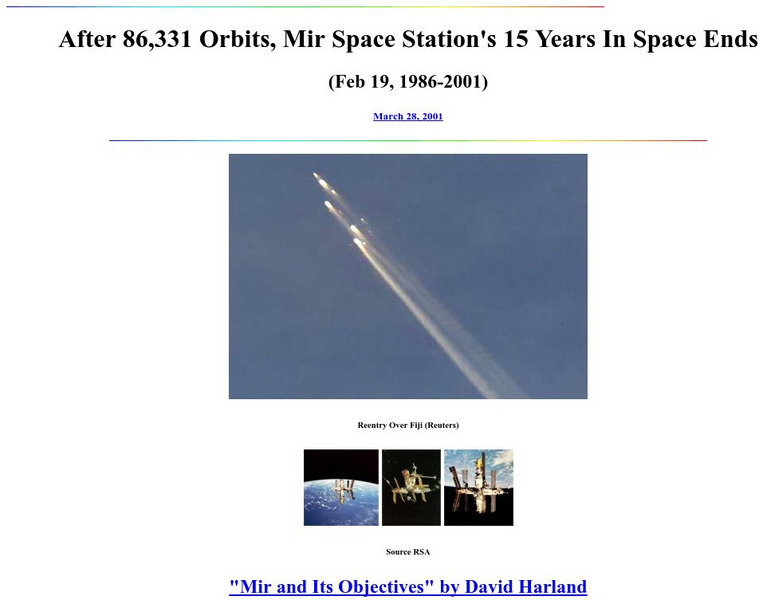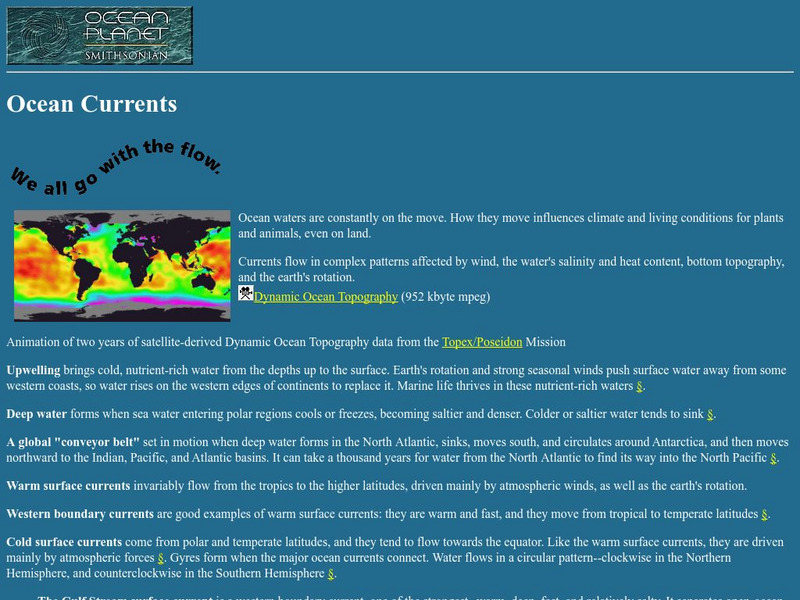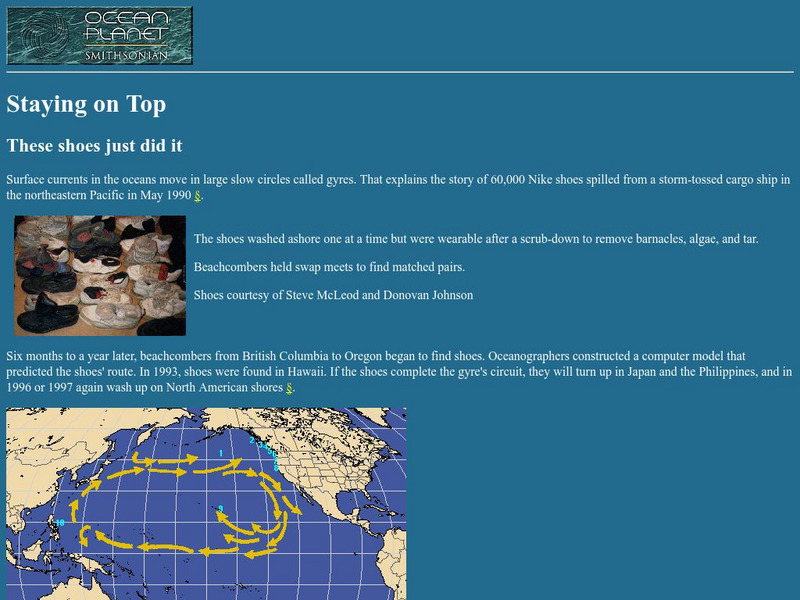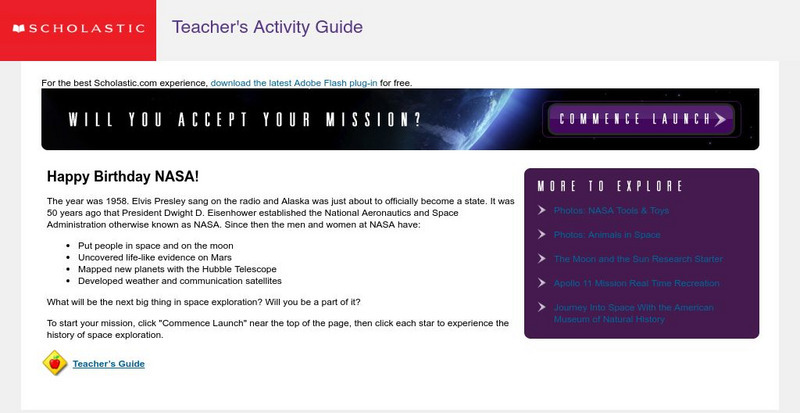Independence Hall Association
U.s. History:the Cold War Continues
A comprehensive look at U.S. foreign policy during the Eisenhower administration. The Cold War was at its height, and the United States used many tactics to fight and contain the spread of Communism. Be sure to watch the cartoon of Bert...
NASA
Nasa: Apollo Lunar Surface Journal: Portable Life Support System
This site provides detailed technical diagrams of space suit components and very detailed explanations of how the Apollo Moon suits worked. Detailed close-up photographs of parts of the space suit are provided. You could probably build...
Other
Visual Satellite Observer: Mir Space Station's 15 Years in Space Ends
Details of Mir's re-entry into the Earth's atmosphere after 15 years in space. Includes information on Mir's mission, configuration, and history.
TeachEngineering
Teach Engineering: Mission to Mars
The Mission to Mars curricular unit introduces students to Mars-the Red Planet. Students discover why scientists are so interested in studying this mysterious planet. Many interesting facts about Mars are revealed, and the history of...
Smithsonian Institution
National Museum of Natural History: Ocean Planet: In Search of Giant Squid
An on-line exhibit archived from a Smithsonian exhibit explores and interprets the facts and myths surrounding giant squids - the world's largest invertebrates.
Smithsonian Institution
National Museum of Natural History: Ocean Planet
Detailed website that was a companion to a 1995 traveling exhibit of the Smithsonian. Links to lesson plans and other educational materials are at the bottom of the page. Enter the exhibition to explore the world of the ocean.
Smithsonian Institution
National Museum of Natural History: Ocean Planet: Water Pollution Toxic Materials
This site, from an archived Smithsonian exhibit, describes and illustrates the effects of toxic materials on wildlife in bodies of water.
Smithsonian Institution
National Museum of Natural History: Ocean Planet: Ocean Currents
The Ocean Planet exhibit at the Smithsonian explains the general features of ocean circulation. A general look at upwelling, deep water, and currents are combined for an overall view.
NASA
Dawn Mission: Dawn Classrooms: The History and Discovery of Asteroids
Student groups explore scientific breakthroughs and the development of technologies that eventually led to asteroid discovery aboard the Dawn space mission. Learning module components include jigsaw reading, model building, math...
NASA
Nasa: Why Study Plants?
Good question. Author outlines many reasons why we should study plants and describes ways in which plants have had a tremendous effect on the human race.
Other
The Space Race
Although the space race was originally a competition between two Cold War foes,it ultimately resulted in many benefits for the people of the Earth. Find information on the Mercury, Gemini, and Apollo, and Soviet space programs,...
Encyclopedia Britannica
Encyclopedia Britannica: Guide to Black History: Guion S. Bluford, Jr.
Brief biographical sketch of the life and career of the first African American launched into space.
NASA
Nasa: Suiting Up for Space
Suiting up for Space describes some of the events surrounding the development of the Mercury Program generation space suit. Historical information and some of the details of suit construction are included. An extensive bibliography is...
FOX News
Fox News: Fast Facts: Space Shuttle Columbia
A brief history of the Space Shuttle Columbia is provided by Fox News.
Smithsonian Institution
National Museum of Natural History: Ocean Planet: Biological Roulette: Alien Species
Click on the roulette wheel and see how some alien species were introduced into the United States and the effect they have had on our country. This is part of an archived Smithsonian exhibit.
Smithsonian Institution
National Museum of Natural History: Ocean Planet: Oil Pollution
Source provides key facts and figures as well as pictures on various oil accidents. Site information is divided up into three categories: Sources, Accidents and Cleanups. This is part of an archived Smithsonian exhibit.
Smithsonian Institution
National Museum of Natural History: Ocean Planet: Staying on Top
This is the story of the infamous Nike shoes that washed off a cargo ship. The shoes later showed up along beaches, giving oceanographers another clue as to how ocean currents move.
Curated OER
National Park Service: America's Space Program Exploring a New Frontier
This site includes a lesson for teachers to use when teaching about America's space program. Also included is the history of the space program, maps, readings, images of the space program, and benefits that resulted from space research.
NASA
Nasa: Apollo Missions "Super Patch"
This site from NASA provides a "Super Patch" of the Apollo program mission patches by Mauro Freschi.
Scholastic
Scholastic: Challenging the Space Frontier
This Scholastic website offers information about space exploration. Use this site to learn about specific missions like the Friendship, Apollo 11, and STS 7. Also Dr. Mae Jemison is featured and interviewed.
NASA
Jpl: Voyager: The Interstellar Mission
The Jet Propulsion Laboratory (JPL) at NASA provides a detailed history of the Voyager Project, including a description of the spacecraft and Voyager's planetary tour.
Curated OER
Mercury Image#pia00437, Nasa/jpl/caltech
New analysis of data returned by the Mariner 10 mission. Includes several photo images. Examines the possibility of volcanism in the history of Mercury and comparisons to Hawaiian and Lunar volcanic events.
NASA
Nasa: Project Mercury Mission Patches
Here you can look at the patches issued for Mercury Missions 3-9.
Space Telescope Science Institute
Amazing Space: Mission Mastermind
This site is provided for by Amazing Science. "NASA needs your help in planning a Hubble Servicing Mission. Join the team!"


